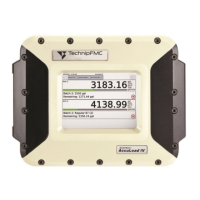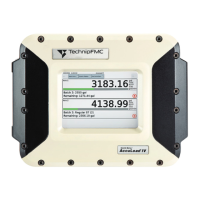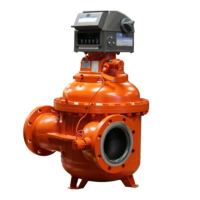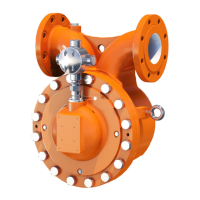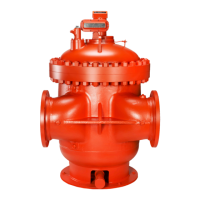Section III – Installation
MN06135 Issue/Rev. 1.3 (6/17) 5
Mechanical
See Pre-installation Considerations.
Electrical
ATEX & IEC EX - Approved Units
(a) Cable Entry must be in accordance to IEC
60079-1 section 13:
For systems utilizing cable glands, the gland
and/or thread adaptor must be Ex certified.
The cable end must be securely installed
and, depending on the cable type, be
properly protected from mechanical dam-
age. Requirements outlined in Section 10.4
of IEC 60079-14 shall be followed.
(b) Cable Entry must be in accordance to IEC
60079-1 section 13:
For systems utilizing conduit, an Ex certified
sealing device must be immediately at the
entrance of the enclosure. Any unused entry
must be suitably blocked with an Ex d IIB
certified plug. Requirements outlined in Sec-
tion 10.5 of IEC 60079-14 shall be followed.
(c) Installation:
General Installation to be in accordance with
IEC 60079-14, wiring system to be in ac-
cordance with section 9.
(d) Flame Path Dimensions:
AccuLoad Joint Dimensions: Flanged joint
widths are 19.05 mm minimum and gaps are
0.051 mm maximum. Flameproof joints shall
be maintained as outlined in section 10.4 or
IEC 60079-14.
(e) Cover Fasteners:
AccuLoad Special Fasteners: Cover Bolts –
steel grade 12.9, M8 x 1.25.
(f) Cautions and Warnings:
Caution: To prevent ignition of hazardous
atmospheres, disconnect from supply circuit
before opening, keep tightly closed when
circuits are in operation.
Warning: Contains internal battery-powered
circuit, to prevent ignition of hazardous at-
mospheres, do not open enclosure unless
area is known to be non-hazardous.
General Requirements
It is imperative that the electrical installation be per-
formed by a competent individual that is familiar with
associated risks involved with the installation, opera-
tion, and maintenance, of electrical equipment in
hazardous (classified) locations. This individual must
possess knowledge of local, national electrical
codes, and/or ordinances concerned with hazardous
location safety requirements. It is recommended
(may be required in some jurisdictions) that the final
installation should be verified / inspected by the au-
thority having jurisdiction before placing the equip-
ment into service.
Electrical installations in hazardous areas have fea-
tures specifically designed to make them suitable for
use in such locations and it is the operator’s respon-
sibility to maintain the integrity of those special fea-
tures.
The operator must ensure that electrical equipment
is:
a. Installed and operated correctly
b. Monitored on a regular basis
c. Maintained with due regard to safety
d. Follow all requirements of National Electrical
Code for the country of installation.
e. A
C Circuits must be isolated from DC circuits
and brought into the unit through their respec-
tive conduit openings.
f. Be sure all connections on the terminal blocks
are tight.
g. A
ll shields must be connected to terminals 3,
13, 14, or 15 on terminal block TB4 on the EAAI
Board or terminal 3 and 4 on terminal block
TB6 on the KDC Board, or terminals 9 and 10
on
TB14 on the BSE Board.
A
ll exposed shields must be properly insulated
to prevent short circuits to other terminals or to
the chassis. The shield at the device (e.g., tem-
perature device, transmitter, etc.) must be cut
back to the insulation and taped off. All shields
should be continuous. If splices are required,
they must be soldered and properly insulated. If
other communicating devices are used with the
AccuLoad III, refer to the manual for that unit for
shielding information. Shields for other com-
municating equipment should not be terminated
in the AccuLoad III.

